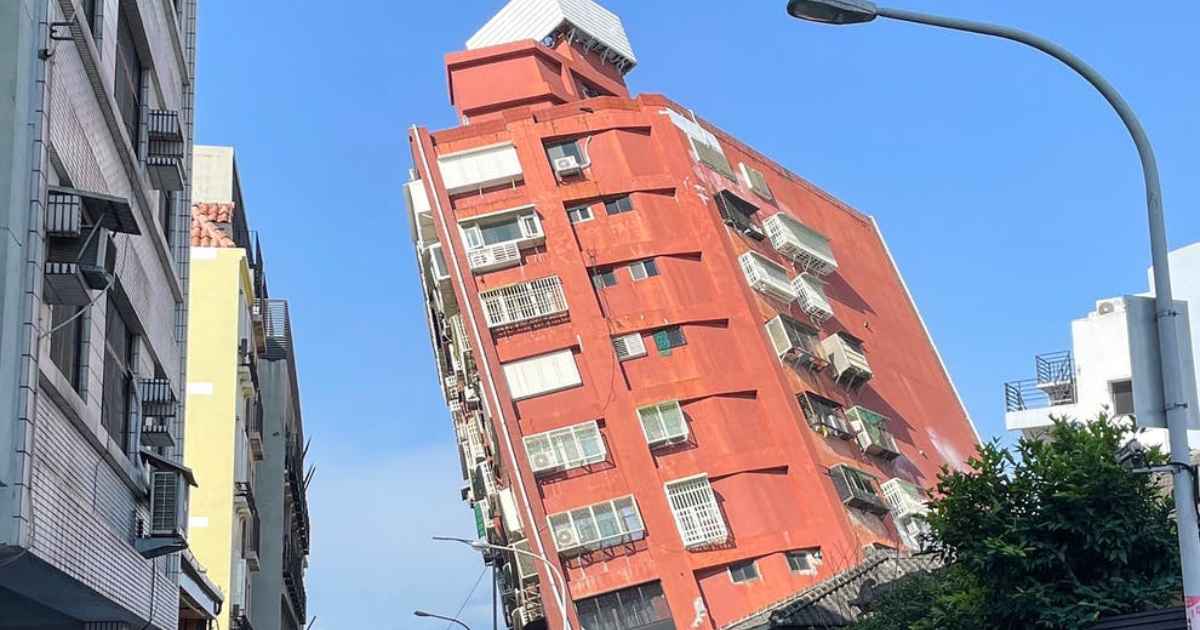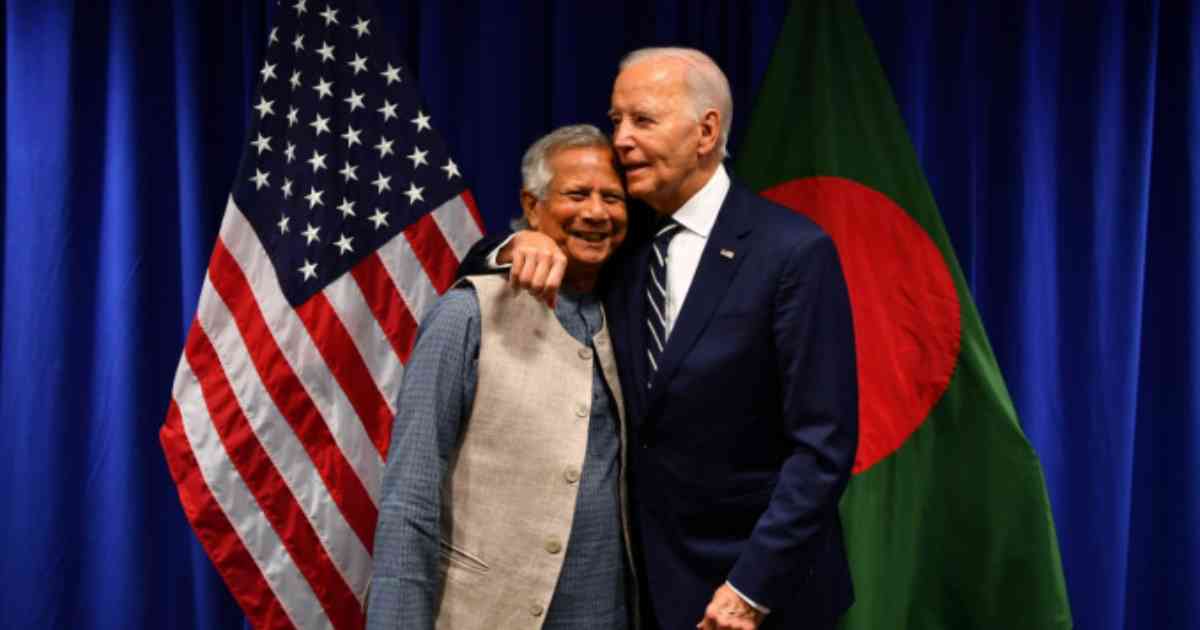World Biz
One Dead, Dozens Injured in Taiwan Earthquake

At least one person was feared dead and nearly 60 injured Wednesday by a powerful earthquake in Taiwan that damaged dozens of buildings and prompted tsunami warnings that extended to Japan and the Philippines before being lifted.
Officials said the quake and series of strong aftershocks was the strongest to shake the island in decades, and warned of more tremors in the days ahead.
“The earthquake is close to land and it’s shallow. It’s felt all over Taiwan and offshore islands,” said Wu Chien-fu, director of Taipei’s Central Weather Administration’s Seismology Center.
Strict building regulations and disaster awareness appear to have staved off a major catastrophe for the island, which is regularly hit by earthquakes as it lies near the junction of two tectonic plates.
Wu said the quake was the strongest since one of 7.6-magnitude struck in September 1999, killing around 2,400 people in the deadliest natural disaster in the island’s history.
Wednesday’s magnitude-7.4 quake struck just before 8:00 am local time (0000 GMT), with the United States Geological Survey (USGS) putting the epicentre 18 kilometres (11 miles) south of Taiwan’s Hualien City, at a depth of 34.8 kilometres.
“I wanted to run out, but I wasn’t dressed. That was so strong,” said Kelvin Hwang, a guest at a hotel in the capital, Taipei, who sought shelter in the lift lobby on the ninth floor.
Social media was awash with shared video and images from around the country of buildings swaying as the quake struck.
Dramatic images were shown on local TV of multi-storey structures in Hualien and elsewhere leaning over after it ended.
Roads to Hualien, a mountain-ringed coastal city of around 100,000 people were reported blocked by landslides.
The Central Emergency Operations Center said one person on a hiking trail was suspected to have been crushed to death by a dislodged boulder, adding nearly 60 people had been treated for quake-related injuries.
In Taiwan, Japan and the Philippines, authorities initially issued a tsunami warning but by around 10 am (0200 GMT), the Pacific Tsunami Warning Center said the threat had “largely passed”.
In the capital, the metro briefly stopped running but resumed within an hour, while residents received warnings from their local borough chiefs to check for any gas leaks.
Taiwan is regularly hit by earthquakes as the island lies near the junction of two tectonic plates, while nearby Japan experiences around 1,500 jolts every year.
Across the Taiwan Strait, social media users in China’s eastern province of Fujian, which borders the southern province of Guangdong, and elsewhere said they also felt strong tremors.
China, which sees self-ruled Taiwan as a renegade province, was “paying close attention” to the quake and “willing to provide disaster relief assistance”, state news agency Xinhua said.
The vast majority of quakes around the area are mild, although the damage they cause varies according to the depth of the epicentre below the Earth’s surface and its location.
The severity of tsunamis — vast and potentially destructive series of waves that can move at hundreds of kilometres per hour — also depends on multiple factors.
Japan’s biggest earthquake on record was a massive 9.0-magnitude undersea jolt in March 2011 off Japan’s northeast coast, which triggered a tsunami that left around 18,500 people dead or missing.
The 2011 catastrophe also sent three reactors into meltdown at the Fukushima nuclear plant, causing Japan’s worst post-war disaster and the most serious nuclear accident since Chernobyl.
Japan saw a major quake on New Year’s Day this year, when a 7.5-magnitude tremor hit the Noto Peninsula and killed more than 230 people, many of them when older buildings collapsed.

Economy
Biden Pledges US Support to Yunus-Led Interim Government in Historic Meeting

US President Joe Biden has expressed his nation’s full backing for Bangladesh and the interim government led by Muhammad Yunus during a bilateral meeting held on the sidelines of the United Nations General Assembly (UNGA) in New York. This marks the first time in Bangladesh’s history that a US president has met with the country’s head of government at a UNGA session, as confirmed by a statement from the Chief Adviser’s Office.
In this unprecedented encounter, Chief Adviser Prof Yunus briefed President Biden on the significant sacrifices made by students who fought against the previous government, leading to the opportunity to rebuild the country. Prof Yunus underscored the importance of succeeding in this national rebuilding effort, calling for US cooperation in the process.
President Biden praised the students’ dedication, stating that their sacrifice calls for further commitment from all, including the US. During the meeting, Prof Yunus presented Biden with a copy of The Art of Triumph, a book featuring wall paintings by students and young revolutionaries.
Prof Yunus, on his first visit to the US as head of Bangladesh’s government, is attending the 79th UNGA, which runs from September 19 to 30. The theme of this year’s debate is “Leaving no one behind: acting together for the advancement of peace, sustainable development, and human dignity for present and future generations.”
Rare Diplomatic Meeting Signals Strengthened US-Bangladesh Ties
Speaking on the significance of the meeting, Chief Adviser’s Press Secretary Shafiqul Alam highlighted the rarity of such an engagement, noting that the US and Bangladesh already enjoy strong relations. “This meeting elevates our relationship to a new level,” Alam stated, as reported by local media.
Observers suggest that the bilateral meeting, which is uncommon for US presidents during the UNGA, signals Washington’s intention to support Bangladesh through its transitional period. Dhaka is hopeful that the encounter will lead to a new strategic partnership that enhances cooperation on multiple fronts.
Yunus Receives Warm Reception from Global Leaders
Earlier in the day, Chief Adviser Muhammad Yunus was welcomed by several world leaders at a reception hosted by UN Secretary-General Antonio Guterres. Held at the North Delegate Lounge in the UN headquarters, the event served to greet the leaders participating in the 79th session of the UNGA.
During the reception, Yunus exchanged greetings with Brazilian President Luiz Inacio Lula da Silva, Mauritian President Prithvirajsingh Roopun, and UN High Commissioner for Human Rights Volker Turk, among others.
Yunus Meets Canadian Prime Minister Trudeau
On the sidelines of the UNGA, Chief Adviser Yunus also met with Canadian Prime Minister Justin Trudeau. The two leaders discussed ways to enhance Bangladesh-Canada relations, focusing on fostering freedom, institution-building, and youth development in Bangladesh.
Prime Minister Trudeau commended Prof Yunus for taking on the leadership role and reiterated Canada’s willingness to support Bangladesh in strengthening its institutions. Prof Yunus, in turn, praised Canada for its enduring friendship and requested increased visa allocations for Bangladeshi students.
The chief adviser also gifted Trudeau The Art of Triumph, further highlighting the contributions of young revolutionaries. In addition to Trudeau, Yunus is scheduled to meet with the managing director of the IMF, the Italian prime minister, and will speak at the Clinton Global Initiative and Friends of Bangladesh events.
World Biz
Environmental groups urge EU ‘high risk’ label for Sarawak

Environmental and rights groups urged the European Union Tuesday to label Malaysia’s Sarawak region “high risk” under controversial new anti-deforestation rules to be implemented from the end of December.
The EU’s deforestation regulation (EUDR) is due to come into force at the end of the year, although Germany and Brazil have recently joined a string of countries urging that implementation be delayed.
Environmentalists and rights groups have, however, called on the EU to move forward with the regulation.
It will bar imports of a vast range of goods — from coffee to cocoa, soy, timber, palm oil, cattle, printing paper and rubber — if they are produced on land that was deforested after December 2020.
It also requires exporters to assess the risk of rights violations associated with production of the commodity.
In a joint statement, a group of Malaysian and international organisations said Sarawak in Malaysian Borneo should be considered “high risk” under the new rules.
Such a designation would mean closer scrutiny of timber and palm oil imported from the region — an unwelcome prospect for Malaysia, which is already pushing back against EUDR.
The NGOs argue Sarawak’s government plans to convert hundreds of thousands of hectares of natural forest to timber plantations, and is granting companies operating leases in areas that have not been surveyed for protection purposes.
Earlier this year RimbaWatch, one of the signatory groups, warned that around 15 percent of Malaysia’s natural forest is at risk because of concessions granted to companies.
Tuesday’s statement also alleges routine violations of Indigenous land rights, including limits on the amount of land that can be legally recognised, and the unilateral revocation of existing land titles.
“Logging companies are still bulldozing Indigenous peoples’ forests in Sarawak without consultation or consent from communities, which should translate into a ‘high risk’ classification,” said Celine Lim, managing director of SAVE Rivers, an Indigenous organisation from Sarawak.
– Vocal opponents –
Sarawak’s forestry department, and Malaysia’s plantation and commodities ministry did not respond to AFP’s request for comment on the claims.
Malaysia and Indonesia have been among the most vocal opponents of EUDR, arguing domestic anti-deforestation standards should be sufficient, and warning the rules will disproportionately harm smallholder producers who cannot meet onerous documentation requirements.
Environmental and rights groups have pushed back against these claims, including at talks in Brussels earlier this month between EU, Indonesian and Malaysian officials.
“Calls from EU governments to delay enforcement of the law are a deplorable abdication of leadership in the face of a climate emergency,” said Luciana Tellez Chavez, senior
environment and human rights researcher at Human Rights Watch.
World Biz
Marxist Dissanayake wins Sri Lanka’s presidential election as voters reject old guard

Marxist lawmaker Anura Kumara Dissanayake won Sri Lanka’s presidential election, the Election Commission announced Sunday, after voters rejected the old political guard that has been widely accused of pushing the South Asian nation toward economic ruin.
Dissanayake, whose pro-working class and anti-political elite campaigning made him popular among youth, secured victory over opposition leader Sajith Premadasa and incumbent liberal President Ranil Wickremesinghe, who took over the country two years ago after its economy hit bottom.
Dissanayake received 5,740,179 votes, followed by Premadasa with 4,530,902, Election Commission data showed.
The election held Saturday was crucial as the country seeks to recover from the worst economic crisis in its history and the resulting political upheaval.
“This achievement is not the result of any single person’s work, but the collective effort of hundreds of thousands of you. Your commitment has brought us this far, and for that, I am deeply grateful. This victory belongs to all of us,” Dissanayake said in a post on X.
The election was a virtual referendum on Wickremesinghe’s leadership of a fragile recovery, including restructuring Sri Lanka’s debt under an International Monetary Fund bailout program after it defaulted in 2022.
Dissanayake, 55, had said he would renegotiate the IMF deal to make austerity measures more bearable. Wickremesinghe had warned that any move to alter the basics of the agreement could delay the release of a fourth tranche of nearly $3 billion that is crucial to maintaining stability.
Neither candidate received more than 50% of the vote. Under the Sri Lankan election system that allows voters to select three candidates in the order of their preference, the top two are retained and the ballots of the eliminated candidates are checked for preferences given to either of the top two vote-getters. The one with the highest number of votes is declared the winner.
It was a strong showing for Dissanayake, who won just over 3% of votes in a previous presidential election in 2019, and suggests voters are fatigued with the old guard.
Dissanayake’s National People’s Power coalition is led by the Janatha Vimukthi Peramuna, or People’s Liberation Front, a Marxist party that waged two unsuccessful armed insurrections in 1970s and 1980s to capture power through socialist revolution. After its defeat, the JVP entered democratic politics in 1994 and mostly played a key role in the opposition. However, they have supported several presidents and been part of governments briefly.
The NPP grouping also includes academics, civil society movements, artists, lawyers and students.
Dissanayake was first elected to Parliament in 2000 and briefly held the portfolio of agriculture and irrigation minister under then-President Chandrika Kumaratunga. He ran for president for the first time in 2019 and lost to Gotabaya Rajapaksa, who was ousted in a public protest over the economic crisis two years later.
Political analyst Jehan Perera said Dissanayake represented the spirit of the 2022 uprising during which angry Sri Lankans ousted Rajapaksa and called for a “system change” and “new faces in politics.”
Dissanayake’s immediate challenge would be to steady the economy “in the face of anxieties felt by business and financial groups about his Marxist and revolutionary background,” Perera said.
Wickremesinghe’s Foreign Minister Ali Sabry congratulated Dissanayake and said he hopes he will “lead with a commitment to transparency, integrity, and the long-term good of the country.”
The government announced Thursday that it passed the final hurdle in debt restructuring by reaching an agreement in principle with private bond holders. At the time of its default, Sri Lanka’s local and foreign debt totaled $83 billion. The government says it has now restructured more than $17 billion.
Despite a significant improvement in key economic figures, Sri Lankans are struggling with high taxes and living costs.
Sri Lanka’s economic crisis resulted largely from excessive borrowing on projects that did not generate revenue. The impact of the COVID-19 pandemic and the government’s insistence on using scarce foreign reserves to prop up the currency, the rupee, contributed to the economy’s free fall.
The economic collapse brought a severe shortage of essentials such as medicine, food, cooking gas and fuel, with people spending days waiting in line to obtain them. It led to rioting in which protesters took over key buildings including the president’s house, his office and the prime minister’s office, forcing Rajapaksa to flee the country and resign.
The outgoing President Wickremesinghe was elected by a parliamentary vote in July 2022 to cover the remainder of Rajapaksa’s five-year term.

